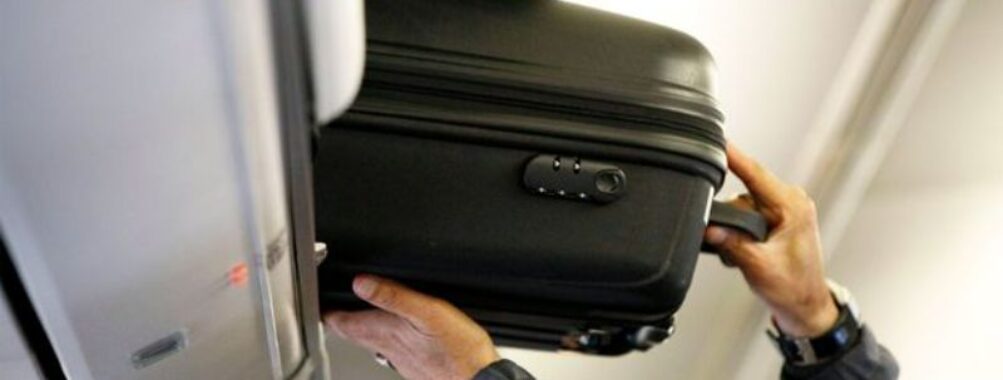
EU Set to Ban Carry-On Fees: What Travelers Need to Know Before Summer 2025
Travelers, take note—big changes are coming. The European Union is finally moving to ban those annoying carry-on luggage fees that budget airlines love to tack on. The European Parliament’s transport committee just voted for new rules that’ll stop airlines from charging extra for a standard cabin bag (up to 7kg and 100cm in dimensions) plus a personal item like a handbag or backpack.
If this ban actually becomes law, it could really shake up air travel in Europe. On some short-haul flights, carry-on fees sometimes cost more than the ticket itself—so you could end up saving a surprising amount.
The legislation goes further, too. Families would finally get to sit together without paying those ridiculous seat selection fees.
Parents who’ve had to choose between coughing up extra or risking being separated from their kids? You can breathe a little easier.
Table of Contents
- Key Takeaways
- Overview of the EU Carry-On Fee Ban
- Purpose and Background
- Timeline for Implementation
- Details of the New Legislation
- What Is Classified as Free Carry-On Luggage
- Personal Item and Cabin Baggage Standards
- Key EU Institutions and Lawmakers Involved
- Role of the European Parliament and MEPs
- Responsibilities of the European Commission
- Influence of the Transport Committee
- Airlines Impacted by the Ban
- Major Budget Airlines and Their Policies
- Low-Cost Carriers and Luggage Fees
- Reactions From Airlines for Europe (A4E)
- Passenger Rights Strengthened by the Ban
- Unjustified Extra Costs and Refunds
- Process for Reimbursement Requests
- Legal Basis and Court Decisions
- European Court of Justice Rulings
- Recent Amendments to Passenger Rights
- EU Ban’s Impact on Travelers
- How Flight Prices and Fees Will Change
- Travel Strategies: How to Travel Light
- Considerations for Children and Reduced Mobility
- Implementation and Enforcement Across Member States
- Trilogue Negotiations and Approval Process
- Role of National Authorities
- Exceptional Scenarios and Exemptions
- Natural Disasters and Extraordinary Circumstances
- War or Security-Related Restrictions
- Frequently Asked Questions
- How will the potential EU regulation impact travelers’ costs for cabin luggage?
- What changes can passengers expect regarding carry-on policies on European flights?
- What are the implications for airlines with the proposed EU carry-on fee regulation?
- How might the new measures alter the travel experience for EU domestic flyers?
- In what ways could the proposed ban on carry-on fees affect budget airlines’ pricing structures?
- Could the EU carry-on fee prohibition lead to changes in overall ticket prices?
- Book Your Dream Experience
- More Travel Guides
Key Takeaways
- Airlines flying in the EU would have to let you bring one standard carry-on bag and a personal item, free of charge.
- The new rules define a standard cabin bag as up to 7kg and 100cm in total dimensions.
- Families with kids won’t need to pay extra to guarantee seats together.
Overview of the EU Carry-On Fee Ban
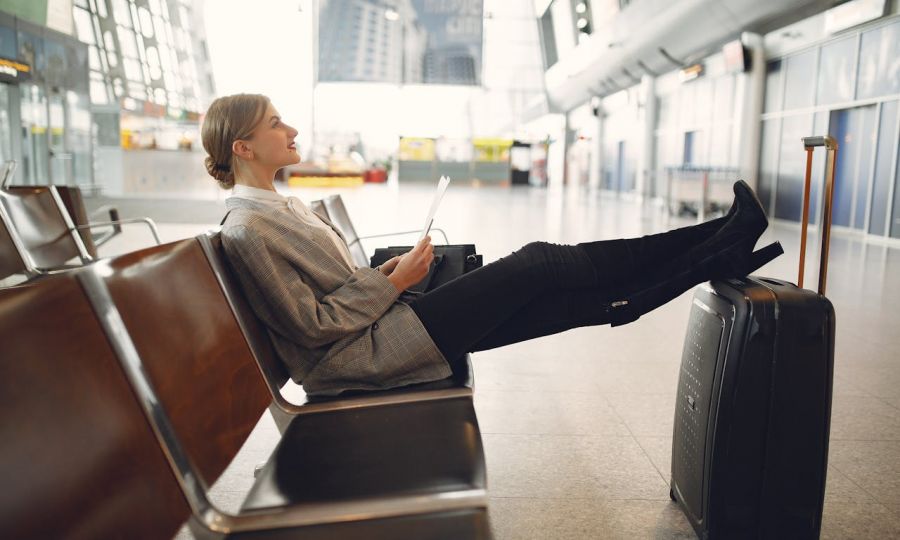
The European Union wants to finally put an end to those surprise luggage fees that travelers keep grumbling about. They’re rolling out legislation to standardize what you can bring onboard, and to eliminate the extra charges that have frustrated travelers for what feels like forever.
Purpose and Background
This carry-on fee ban didn’t come out of nowhere. People have been getting increasingly fed up with low-cost airlines that lure you in with cheap fares, only to slap on extra charges for basic hand luggage. The European Parliament’s transport and tourism committee finally stepped in, voting to give passengers some real, enforceable rights.
It’s part of a broader push to reform passenger rights across the EU. The new law targets airlines that advertise rock-bottom fares, then hit you with hefty fees for even the smallest bag.
Under these rules, you’ll get to bring both a personal item (think handbag or backpack) and standard hand luggage up to 15 pounds, no extra charge.
Timeline for Implementation
Momentum is building fast. The transport committee already adopted the proposal, which is a big deal.
The full Parliament will vote at its next session. If all goes as expected, the ban could roll out as soon as July 2025.
Airlines will need time to overhaul their pricing and policies. Budget airlines especially—let’s face it, they rely on these extra fees—will have to rethink their whole business model.
For travelers, this means booking flights in or from the EU will get a lot more straightforward. No more math gymnastics just to figure out your real ticket price.
Details of the New Legislation

The EU is rolling out some pretty bold rules to protect travelers from sneaky fees and to finally standardize baggage allowances on all EU flights.
What Is Classified as Free Carry-On Luggage
With these new rules, airlines have to let you bring a small carry-on into the cabin for free. That means bags that fit under the seat or in the overhead bin—no more “surprise” fees at the gate. The Parliament’s transport committee really zeroed in on low-cost carriers that charge for even the tiniest cabin bags.
They’re setting size and weight limits that’ll be the same everywhere in the EU. No more guessing games when you fly from one country to another.
Airlines won’t get away with charging for essential items anymore. This is a major shift—some budget airlines have been charging up to €60 for a cabin bag!
Personal Item and Cabin Baggage Standards
The law lays out clear standards for both personal items and larger cabin bags. Personal items—like a laptop bag, small backpack, or handbag—must be free on all flights. These are the things you tuck under the seat in front of you.
For bigger cabin bags (the classic trolley bag), the EU is setting standard dimensions and weight. Final numbers aren’t locked in, but expect something close to 55 x 40 x 20 cm.
If your airline already includes cabin bags in the ticket price, you probably won’t notice a change. The ones that don’t? They’ll have to update their policies before the rules kick in.
Mandatory “trolley bag” fees will be banned for all EU airlines, no matter what business model they use.
Key EU Institutions and Lawmakers Involved
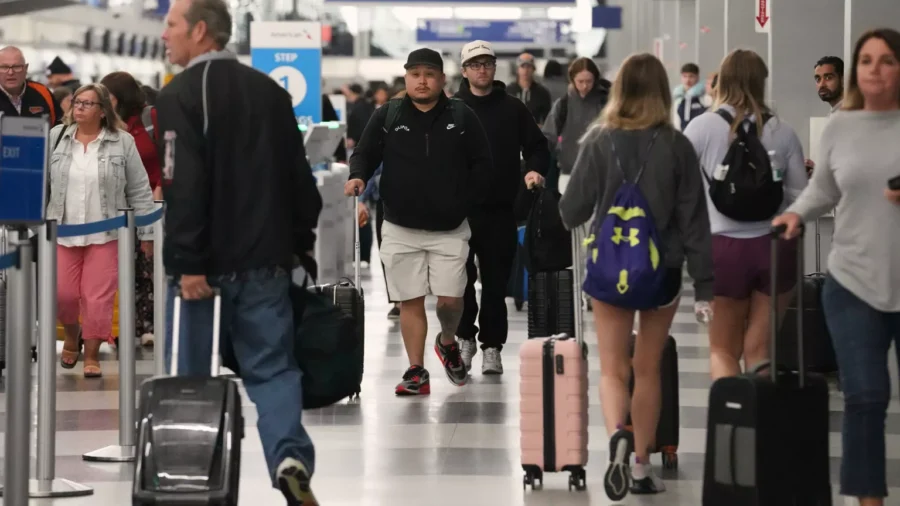
A few heavyweight EU institutions are working together to make this carry-on fee ban a reality. Each has its own part to play in the legislative drama.
Role of the European Parliament and MEPs
The European Parliament is leading the charge on this one. Just this week—Tuesday, June 24, 2025—MEPs (Members of the European Parliament) voted in the transport committee to ban carry-on fees. Many of them have probably suffered these fees themselves, shuttling between Brussels and home.
MEPs represent EU citizens directly. They’re not shy about calling out budget airlines for what they see as excessive fees.
Now, Parliament members have to negotiate with the Council (that’s the voice of the member states) to hammer out the final law. If they get it through, travelers will be allowed both a personal item and hand luggage up to 7kg, no extra charges.
Responsibilities of the European Commission
The European Commission, which acts as the EU’s executive branch, kicked off this regulation as part of a larger passenger rights overhaul. Their experts dug into how luggage fees hit consumers across different countries.
They’ll make sure the new rules can actually work on the ground at every EU airport. That means collaborating with national aviation authorities to set clear guidelines for what counts as acceptable carry-on size.
The Commission also has to deal with pushback from airlines, especially budget carriers like Ryanair. Ryanair, for example, reportedly made about a third of its €13.95 billion revenue in 2024 from luggage fees alone. That’s a lot to lose.
Influence of the Transport Committee
The Transport Committee played a key role in shaping what the ban would actually look like. These MEPs know the ins and outs of the airline world, and they’ve tried to balance the needs of travelers with the realities of running an airline.
They set the specifics—one personal item, one hand luggage up to 7kg (15 pounds), both free. By nailing down the details, they’re trying to stop airlines from wriggling out of the rules.
The committee heard from both consumer groups and airline reps before making their call.
Now, their recommendation goes to the full Parliament for a vote. If it passes, packing for a European flight is about to get a whole lot less stressful.
Airlines Impacted by the Ban
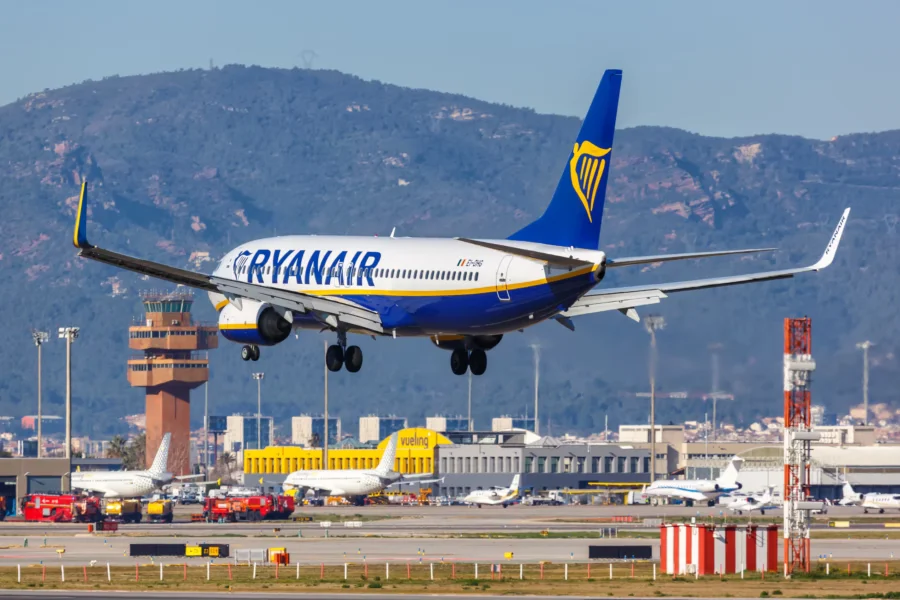
This ban could hit certain airlines pretty hard, especially those that rely on luggage fees to pad their bottom line. Budget carriers will feel this the most.
Major Budget Airlines and Their Policies
Ryanair is the poster child here. Right now, they let you bring a small personal item for free, but if you want a standard cabin bag, you have to pay for priority boarding—usually €6-€12. If you show up at the gate with an oversized bag and no priority, you’re looking at €25 or more.
EasyJet is a bit more generous. You get a small cabin bag for free, but anything bigger (the kind you’d put in the overhead) comes with extra fees—usually €15-€35, depending on where you’re flying.
Wizz Air? Same story as Ryanair. Only a tiny under-seat bag is free, and if you want to bring a real cabin bag, you could pay up to €40 at the airport if you didn’t prepay online.
Low-Cost Carriers and Luggage Fees
Vueling and Volotea, especially popular in Southern Europe, also charge for standard cabin bags unless you buy a pricier fare. Their basic tickets only let you bring something you can stash under the seat.
These airlines have built their whole business around “unbundling”—selling you the ticket, then charging for everything else. For some, luggage fees make up 20-30% of their revenue.
One thing travelers often miss: these airlines can change their baggage rules pretty much whenever they want. That means you might get caught out at the gate, facing a surprise bill that doubles your ticket price.
Reactions From Airlines for Europe (A4E)
Airlines for Europe (A4E), the biggest airline association in the EU, isn’t happy about this. They claim the ban will force up base fares for everyone, so travelers who pack light will end up subsidizing those who bring more.
“This approach goes against consumer choice and the successful unbundling model,” an A4E spokesperson said at a recent press conference. Some airlines have even threatened to cut routes or reduce flight frequency if the ban passes.
A4E also points to other markets, saying similar rules have led to unintended consequences—like stricter enforcement of weight and size limits for the remaining free baggage.
Passenger Rights Strengthened by the Ban
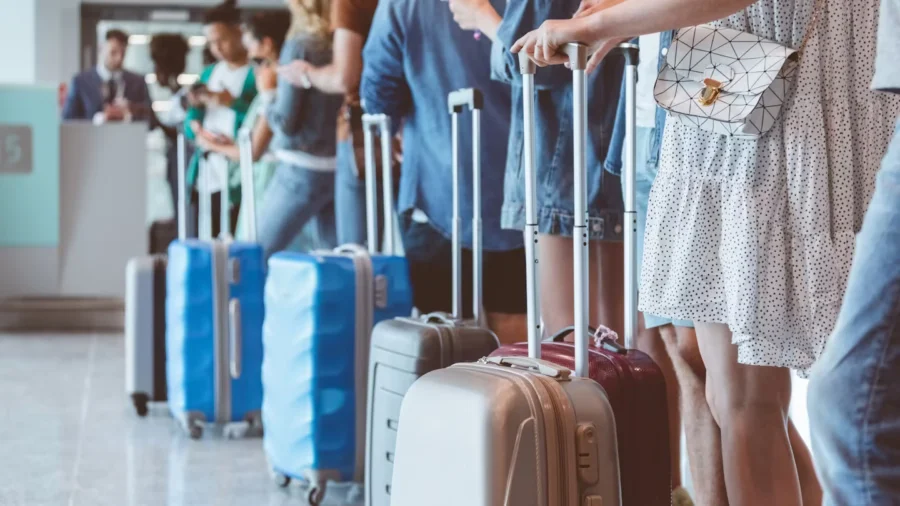
With this ban, travelers finally get some solid protections against unexpected costs. It’ll be much clearer what you’re actually paying for, and you’ll have an easier time getting your money back if airlines break the rules.
Unjustified Extra Costs and Refunds
Now, airlines can’t charge you extra for a personal item (handbag or backpack) and a standard carry-on up to 7kg. That’s all included in your base fare.
If you’ve paid these fees after the new law takes effect, you have the right to compensation. The updated passenger rights make it clear: these charges count as “unjustified extra costs” and airlines have to refund them.
Kids under 12 get extra protection. Airlines must let them bring their carry-ons for free, recognizing that families have different needs.
The law really goes after the practice of advertising low fares, then tacking on big fees for basic things like bringing a small bag. That’s no longer allowed.
Process for Reimbursement Requests
Getting your money back for these banned fees should be a lot simpler now. You just file your request directly with the airline, including your booking info and proof of payment.
Airlines have to reply within 14 days. If they don’t, your claim is automatically approved.
The only real exception is if something truly out of the airline’s control happens—but charging for standard carry-on isn’t one of those cases.
You can file claims for flights after the law is in effect, so keep your receipts and booking confirmations handy.
If the airline tries to dodge your claim, you can escalate to national aviation authorities. They’ll have stronger enforcement powers under the new rules.
Legal Basis and Court Decisions

This EU move to ban carry-on fees is rooted in some pretty important court rulings that have shaped passenger rights over the years.
European Court of Justice Rulings
The European Court of Justice has been laying the groundwork for this for a while. Back in 2014, they ruled that airlines must let you bring “essential items” onboard without extra charges. That case came after passengers challenged Ryanair’s strict baggage policies.
Then, in 2022, the Court decided airlines can’t call standard hand luggage an “optional” service. The judges said hand luggage is a “necessary aspect of air transport” as long as it fits reasonable size and weight rules.
These decisions paved the way for the current ban. They made it clear: reasonable carry-on luggage should be part of your ticket price, not treated as an add-on.
Recent Amendments to Passenger Rights
The European Parliament just approved a set of amendments that beef up the Air Passenger Rights Regulation. Now, travelers can bring both a personal item and a standard carry-on bag (up to 15 pounds) without paying extra.
They’ve also finally spelled out what “reasonable” luggage size means. Airlines have to let you bring bags that fit in overhead bins or under the seat—no hidden charges.
One thing that stands out: the regulations now demand airlines show the total ticket price up front, including all mandatory items like luggage. No more “drip pricing” where your fare mysteriously balloons as you click through booking.
These changes should kick in by early 2026, giving airlines a bit of breathing room to tweak their pricing models.
EU Ban’s Impact on Travelers
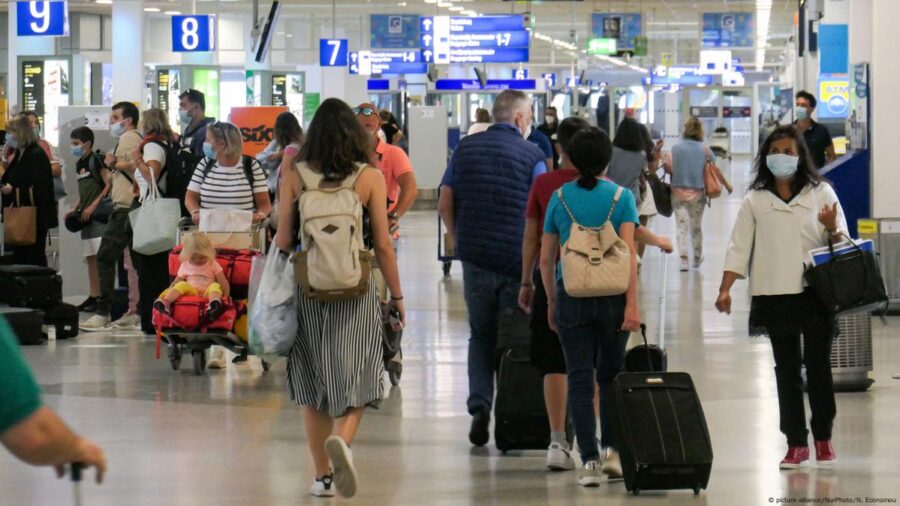
The EU’s move to ban carry-on luggage fees is about to shake up European air travel. You’ll notice shifts in pricing, need to rethink your packing strategies, and find some welcome relief if you’re traveling with family or mobility needs.
How Flight Prices and Fees Will Change
Once the carry-on fee ban lands in July 2025, airlines will scramble to adjust. Budget carriers like Ryanair and easyJet—who’ve leaned hard on these fees—will probably hike base ticket prices to make up for it. Expect to see “all-inclusive” pricing become the norm, not those barebones fares that lure you in.
You’ll get a personal item (think handbag or laptop bag) plus carry-on up to 15 pounds for free. If you’re a light packer, this is a small but real victory—no more coughing up €20-60 per flight for your little suitcase.
But keep an eye out: airlines are crafty. They might start charging more for seat selection, priority boarding, or checked luggage. Before you book your next European flight, take a hard look at the total cost.
Travel Strategies: How to Travel Light
This new rule is your chance to master the fine art of traveling light. I always recommend compression packing cubes—they shrink your clothes by up to 30%. Rolling your clothes instead of folding them? Game changer for both space and wrinkles.
Pack clothes that mix and match. Three tops, two bottoms, all in colors that go together, and suddenly you have six outfits. Quick-dry fabrics are a lifesaver; you can wash them in a hotel sink and they’ll be dry by morning.
Toiletries are a classic space-hog. Go for solid shampoo bars and toothpaste tablets—they’re lighter, less messy, and you won’t run into liquid restrictions. Plenty of travel gear companies now make ultralight containers that are perfect for quick trips.
Wear your bulkiest stuff on the plane. I’ve stuffed everything from snacks to headphones in a jacket with a dozen pockets. It’s not always pretty, but it works.
Considerations for Children and Reduced Mobility
Families with kids will really feel the difference. Before this, carry-on fees could tack on €100 or more to a family trip. Now, parents can bring diaper bags, snacks, and entertainment for kids under 12—no extra charges.
Travelers with reduced mobility also get a break. Medical supplies or assistive devices now fall under the free allowance, making things more accessible and less expensive for those who need them.
Airlines have to clearly spell out what’s allowed in cabin baggage. That’s a relief for anyone who’s been burned by surprise fees at the gate.
If you’re packing for kids or someone with special needs, focus on the essentials. A small first aid kit, meds, and comfort items should always top your packing list.
Implementation and Enforcement Across Member States
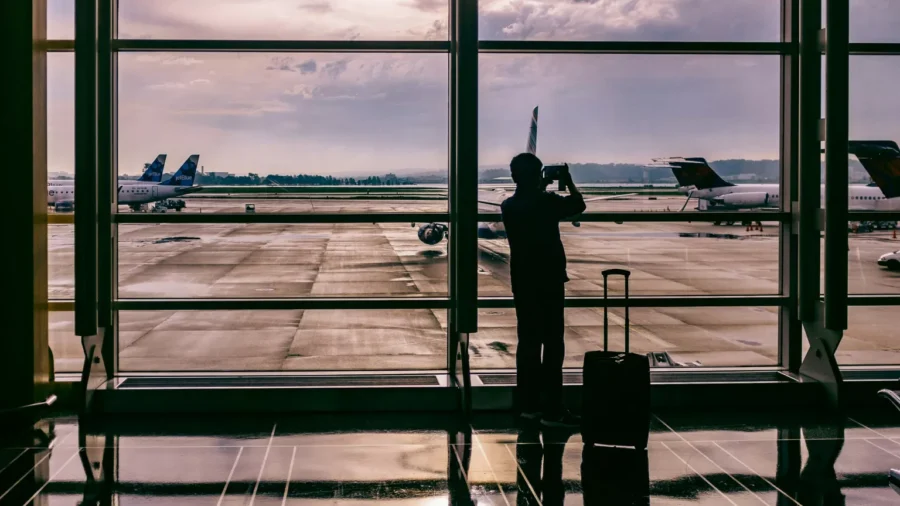
For this carry-on fee ban to actually happen, the EU still needs to clear some legislative hurdles and get member states on board. The process gets a bit messy, with each country needing to set up its own enforcement.
Trilogue Negotiations and Approval Process
The ban on carry-on baggage fees just cleared a big hurdle in the European Parliament, but it’s not a done deal yet. Now, the legislation heads into trilogue negotiations—a three-way chat between Parliament, the European Commission, and the Council of the EU.
For the ban to stick, at least 55% of EU member states representing 65% of the EU population must say yes. Spain already supports the changes, which is promising for travelers.
These talks could drag on for months as they iron out details. Some countries may want to tweak baggage size standards or push for different timelines.
Role of National Authorities
Once the EU gives the green light, each country has to set up its own enforcement system. National aviation authorities will probably monitor airline compliance and handle passenger complaints.
Countries will decide on penalties for airlines that keep charging for reasonable carry-ons. Some might hit them with big fines, others could start with warnings.
This legislation tries to create a standard across the EU for what counts as “reasonable” size and weight for carry-on bags. That’s huge, since airline policies right now are all over the place.
National consumer agencies will also step up, helping passengers understand their rights and file complaints if airlines don’t play by the new rules.
Exceptional Scenarios and Exemptions

Even with the EU’s ban aiming for consistency, some situations will still bend the rules. The law recognizes that extraordinary events can throw normal travel out the window.
Natural Disasters and Extraordinary Circumstances
When natural disasters hit, airlines often put special policies in place that override standard baggage rules. Volcanic eruptions, wild storms, flooding—carriers might limit cabin baggage for safety.
After the 2010 Eyjafjallajökull volcano, for example, European airlines cut down on carry-ons to speed up evacuations. In cases like these, the EU rules will likely let airlines temporarily restrict baggage.
Always check your airline’s website if there’s a natural disaster brewing. Most airlines will email or text you about policy changes during these times.
War or Security-Related Restrictions
If there’s a security scare or you’re flying to or from a conflict zone, your usual baggage rights might not apply. Security agencies can slap on temporary restrictions, and airlines have to comply.
This could mean:
- Bans on certain items in your carry-on
- Smaller size allowances for bags on certain routes
- Extra screening that limits what you can bring
Flights near or in conflict zones often run under stricter security, so expect tighter rules than the standard EU allowances. The legislation will likely spell out exceptions for security reasons.
Check travel advisories from your government before going to high-risk areas—those instructions override EU baggage rights every time.
Frequently Asked Questions
The new EU regulations banning carry-on baggage fees are set to shake up travel for both passengers and airlines. The aim? Standardize luggage policies and force airlines to be upfront about pricing.
How will the potential EU regulation impact travelers’ costs for cabin luggage?
You’ll no longer pay extra for a small carry-on. You can bring a personal item and a small hand luggage item—no additional charge.
That means those irritating fees budget airlines love to tack on? Gone, at least for your basic carry-on.
The proposal specifically says you can bring hand luggage up to 15 pounds for free. That’s real savings if you fly within the EU.
What changes can passengers expect regarding carry-on policies on European flights?
Expect more consistent rules about bag size and weight across airlines. The EU wants to stamp out the confusion that comes from every airline having its own policy.
No more last-minute panic at the gate when your bag suddenly doesn’t fit the airline’s secret requirements. Standardization means you’ll know what you can bring, every time.
Lawmakers are pushing for uniform policies, so planning what to pack should get a whole lot easier.
What are the implications for airlines with the proposed EU carry-on fee regulation?
Airlines—especially budget ones—will have to rethink their entire business model. Many have built their bottom line on these fees.
They’ll need to find new ways to stay profitable while following the new rules. This could mean changes to other parts of their service.
With broad political support, airlines won’t have much room to fight back once the rules take effect.
How might the new measures alter the travel experience for EU domestic flyers?
Travelers should find things simpler and less stressful. No more worrying about surprise fees just for bringing your essentials.
Boarding could get smoother, too, since everyone will know exactly what’s allowed. Less confusion, less delay.
With fewer hidden costs, the whole process should feel more transparent—and honestly, a bit more pleasant.
In what ways could the proposed ban on carry-on fees affect budget airlines’ pricing structures?
Budget carriers will probably move costs around to make up for lost baggage fee revenue. Expect higher base fares or new fees for other services.
Some might cut back on free amenities to keep their low-cost image. You might notice fewer extras during your flight.
The upshot? Airlines will have to get more upfront about their pricing, so you’ll see the real cost sooner—no more nasty surprises at checkout.
Could the EU carry-on fee prohibition lead to changes in overall ticket prices?
You might notice ticket prices creeping up a bit as airlines start covering the cost of that “free” carry-on. Instead of nickel-and-diming you for every little thing, airlines could just roll it all into one upfront price.
But here’s something interesting—this push for transparency could spark some real competition on what you actually pay. If every airline has to offer the same basic luggage allowance, suddenly you can compare fares without squinting at the fine print or doing mental math.
Of course, it’s not one-size-fits-all. Some airlines (the budget ones, especially) might scramble to keep prices down with clever tricks, while others just bump up fares and call it a day.
Honestly, it’s a bit of a wild card depending on the route and the airline. If you’re savvy, this could be a good time to watch for unexpected deals or new fare structures as carriers try to outdo each other.


